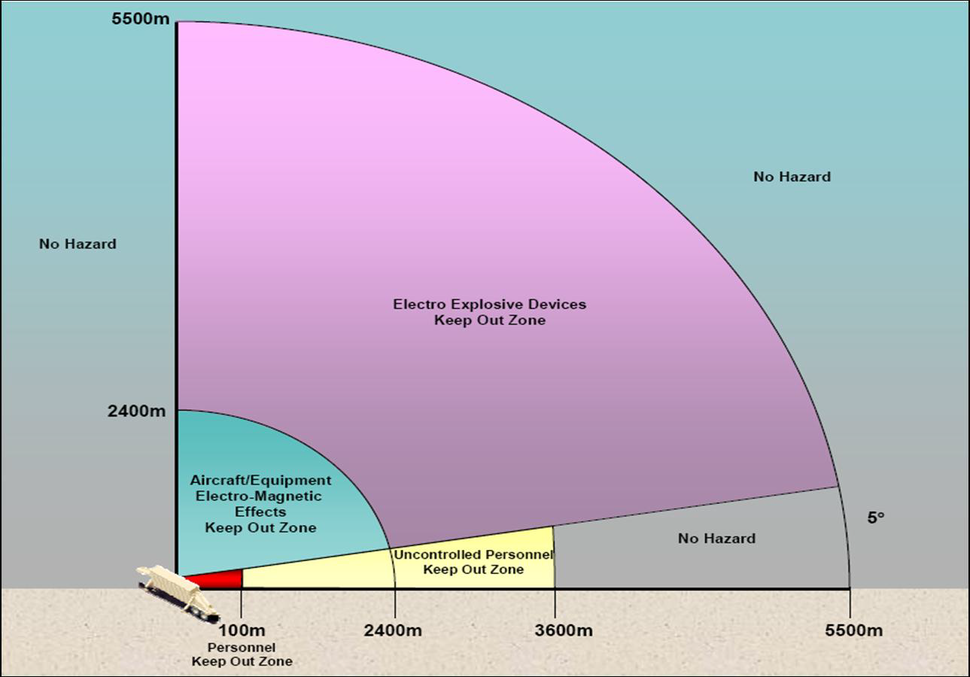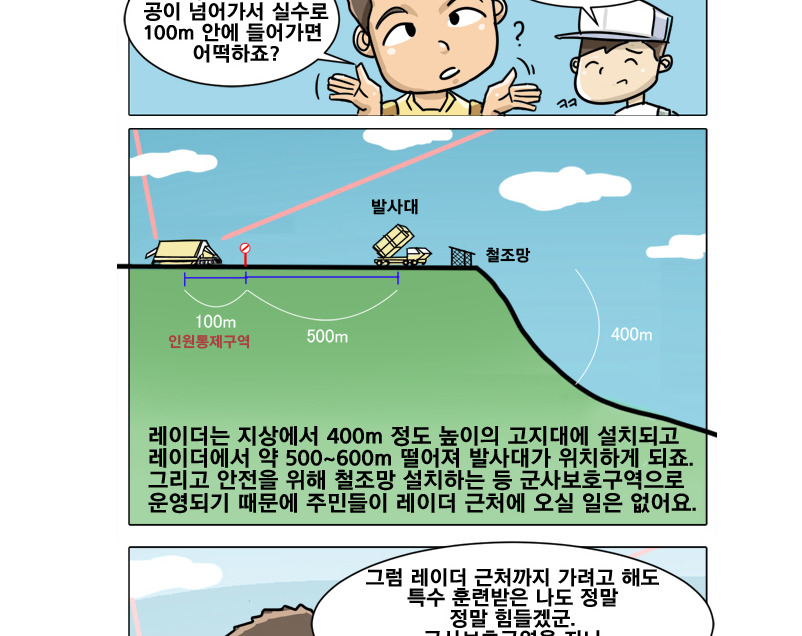What the gov’t won’t say about the electromagnetic waves emitted by THAAD (hankyoreh)
[Analysis] What the gov’t won’t say about the electromagnetic waves emitted by THAAD
#THAAD #health_risk #safety #Korea
For now, the government is claiming that the waves pose no health risk to residents, but further examination is needed
 |
|
RF electromagnetic radiation can cause serious burns and internal injury).
|
Following the South Korean government’s sudden announcement earlier this month of the deployment site for the US military’s THAAD missile defense system, there has been a fierce debate about the electromagnetic waves emitted by the THAAD radar.While the government has used a variety of strategies in a public relations campaign designed to convince residents of Seongju County that the electromagnetic waves are of no concern, this does not appear to be much consolation for the people who will have the radar base in their backyards.Electromagnetic waves move at the speed of light during the regular oscillation of electric fields and magnetic fields. The word “electromagnetic wave” has probably reminded many people of the harmful ELF (extremely low frequency) electromagnetic waves that are produced by power lines and household appliances such as electric blankets and televisions. But electromagnetic waves are in fact an extensive category including the various frequencies used in broadcasting and telecommunications and even sunlight.THAAD’s eye is the AN/TPY-2(TM) radar, which identifies targets by shooting a beam of electromagnetic waves into the area under observation and detecting any waves that bounce back.These electromagnetic waves are X-band microwaves with a frequency of 8 to 12 GHz (gigahertz) and a wavelength of 2.5 to 3.75 cm. The X-band falls between the C-band (4-8 GHz) and the Ku-band (12-18 GHz), as defined by the Institute of Electrical and Electronics Engineers (IEEE).The X-band is used around the world not only by military radars but also by radars on civilian vessels, radars for meteorological observations, the radar guns that police point at speeding cars and ham radio operators. Experts are reluctant to answer questions about safetyThe microwaves created in the THAAD radar’s electromagnetic wave generator pass through an amplifier and are then released toward the target area through the antenna. While data has not been made public about the output of the antenna that determines the strength of the radar’s electromagnetic waves, it must be very strong, given THAAD’s detection range.The US army’s instruction manual for the AN/TPY-2(FBM) states that the radar’s range for detecting an enemy missile prior to the intermediate stage of its trajectory is at least 1,000km. The AN/TPY-2(FBM) and the AN/TPY-2(TM) radars have the same hardware, and only their software is different, the manual explains.
 |
|
A Ministry of National Defense cartoon explaining the THAAD missile defense system
|
The South Korean government has established and regulates human exposure levels in regard to microwaves and other electromagnetic waves.The US army’s instruction manual for the AN/TPY-2(FBM) radar states that radiation from the electromagnetic waves emitted from the radar antenna can cause severe burns and internal injuries, and the army has declared 100 meters in front of the THAAD radar deployed in Guam to be off-limits.The general sense that the microwaves emitted by the radar could be harmful to the human body is not being debated. The question is what effect will be had on Seongju residents by the electromagnetic waves that will be emitted at a specific strength from the top of one particular hill.As of July 24, the Hankyoreh had managed to get in touch with five of the seven experts who co-authored the book “Radar Engineering and the Use of Electronic Warfare” (published by the Korean Institute of Electromagnetic Engineering and Science), and all five of these experts answered this question by noting that there was not enough information to make a judgment.While none of the experts said the radar would have an effect and some of them predicted that it would not have an effect, all of them avoided categorical language.“We only know that the radar uses the X-band without knowing anything about the pattern of the antenna or about its output capacity. That’s why no scientist can speak with confidence,” said Myeong Ro-hun, a professor of electrical and electronic engineering at KAIST (Korea Advanced Institute of Science and Technology).“If the measurement and simulation values from the place where [the radio] is actually being operated are correct, we have to trust the values of the simulation that they performed with those materials in the South Korean terrain. If the resulting values are lower than international accepted levels, we ought to conclude that it‘s safe,” said Park Dong-cheol, a professor of electrical engineering and information technology at Chungnam National University. The results of such an analysis have never been made public.These experts all held the view that the effect the electromagnetic waves will have on the area near the radar can vary substantially with the antenna output, the radiation pattern and the angle of orientation.This caveat means that the South Korean Defense Ministry’s measurement of the electromagnetic waves emitted from the THAAD radar on Guam – which were supposedly just 0.007% of the 10w/ square meter maximum tolerated for the human body – should not be treated as very significant. No information was released or reviewed about the output or angle of the electromagnetic beam that the radar was emitting at the time of measurement.The effect of electromagnetic waves on the human body is a question that is even more difficult to answer. In order to properly assess the effect on the human body, it would be necessary to consider a variety of levels of exposure and the various qualities of the subjects being exposed. Even electromagnetic waves that would have a negligible effect on the average individual could be dangerous for embryos or fetuses that are undergoing cellular division in the reproductive system or the womb. But scientists are only now learning about the effect that electromagnetic waves from mobile phones have on the brain and other organs.The two main pieces of evidence that the Defense Ministry has offered to support its categorical statement that the THAAD radar that will be deployed at Seongju will not have an effect on the locals are either incorrect or disregard half of the facts.The Ministry has stated that the difference in elevation between the planned radar installation and the Seongju downtown area is 400 meters. Since the radar will be shooting waves into the sky from such a high place, the Ministry has said, there is no reason to worry.But in fact, the actual elevation of the hill that the radar is supposed to be installed on is 383.4 meters in elevation above sea level. The Ministry‘s claims would suggest that the Seongju downtown would be underwater. Considering that Seongju downtown is located at an elevation of 44.5 meters, the actual difference in elevation because the two points is 61 meters less than the Ministry claimed. Electromagnetic waves also affect surrounding areaAnother important piece of evidence offered by the Ministry of National Defense in claiming the electromagnetic waves will have no impact is the strongly straight-line nature of the radar waves. The argument is that residents should not worry even if the waves from the radar are passing directly overhead, since they would merely move straight forward without scattering. But a property of waves emitted by an antenna is that they radiate to the surrounding area before moving straight ahead. Even a directional radar antenna designed to only send waves in the target direction will inevitably radiate some electromagnetic waves to additional minor lobes such as side lobes and back lobes rather than in the intended direction (the main lobe).“Because the level is small, a decision should be made on whether it’s a meaningful level, but there are always side lobes and back lobes, and it‘s impossible to get rid of them 100%,” said Park Dong-cheol. “Engineers can only work on reducing it once it approaches permissible levels.”With the government offering only half an explanation – emphasizing the straight-line nature of the electromagnetic waves while ignoring their radiation properties – the residents’ continued apprehensions appear natural.In response to the continued controversy over the THAAD radar waves‘ safety, the Ministry of National Defense pledged to relocate the radar and conduct an after-the-fact environment impact assessment once it is in place. The after-the-fact procedure is part of a formal environmental impact assessment according to the Environment Impact Assessment Act that is not conducted in smaller-scale assessments. Ordinary assessments also require the collecting of resident opinions. The question for many now is how the ministry plans to honor its own assessment pledge.By Kim Jeong-soo, senior staff writer
